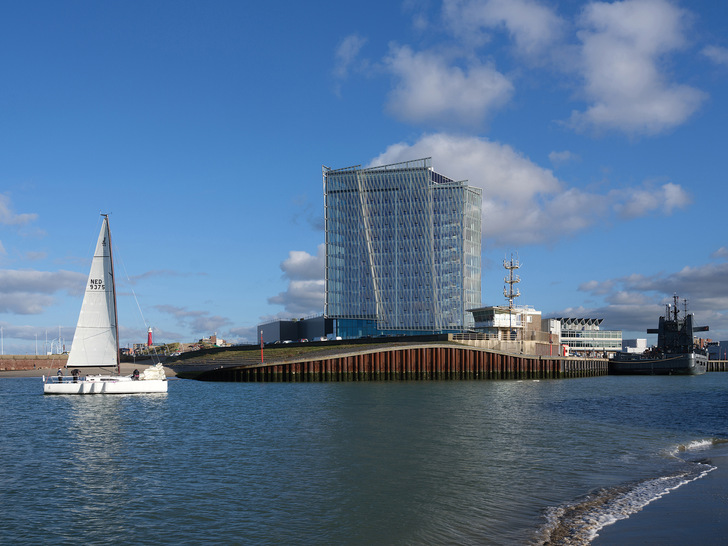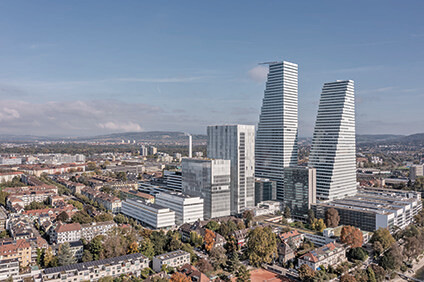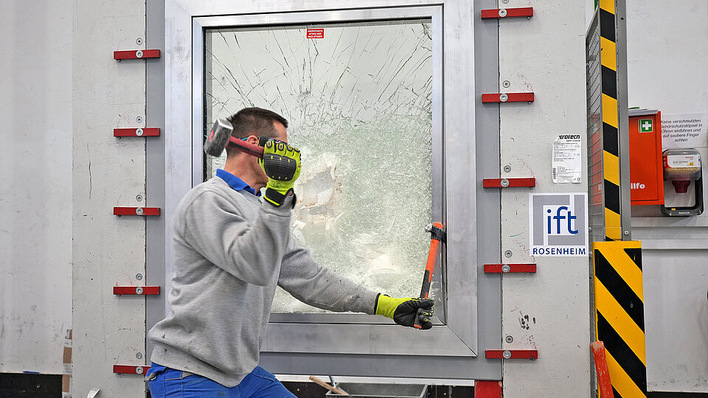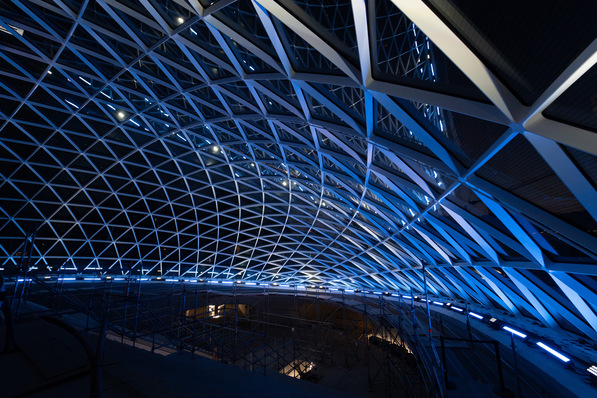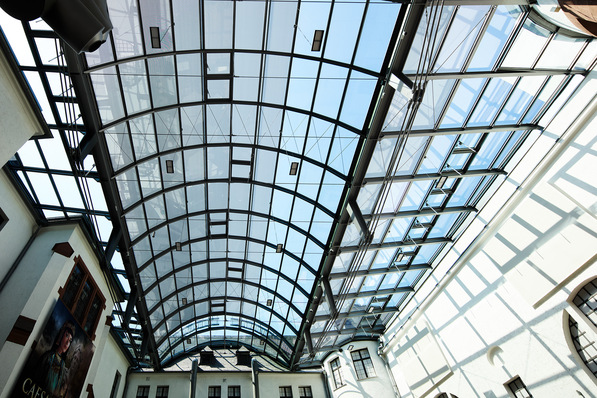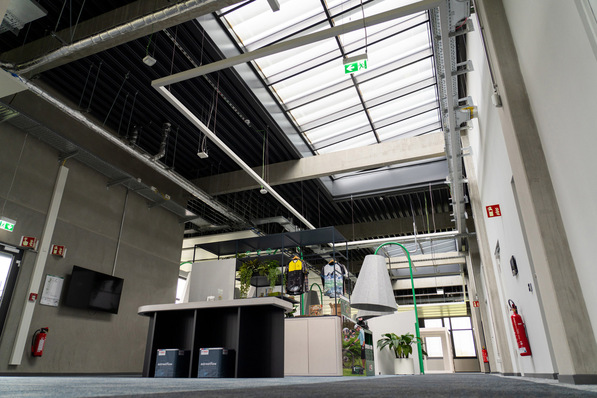With its multi-faceted facade, the new 4-star Inntel Hotel looks to visitors to Scheveningen like the sail of a boat in the wind. Diagonal stripes on the facade glass symbolise the dynamics of the sails. The triangular hotel building stands at the tip of the pier and looks different from every vantage point, no two sides of the facade are the same.
The glass for the facade comes from the workshops of two members of the Flachglas MarkenKreis (www.flachglas-markenkreis.de): Pilkington Austria printed more than 900 glasses, which were then processed into insulating glass at Pilkington Nederland. In addition to the special appearance, the printing also significantly reduced the g-value of the glazing. According to the planners, all building physics requirements for summer thermal insulation are now optimally fulfilled.
How does the glass facade make the building so special?
KCAP Architects&Planners' architectural language is reminiscent of the beach, the sea and the waves. Reflections of the sky, the sun and the clouds on the facade underline the relationship to the maritime context.
Also in the Netherlands: Impressively sustainable energy-efficient facade in Amsterdam
At night, the hotel transforms into an inviting "lighthouse" and offers views into the interior. The impressive glass facade is a centre of attention at any time of day.
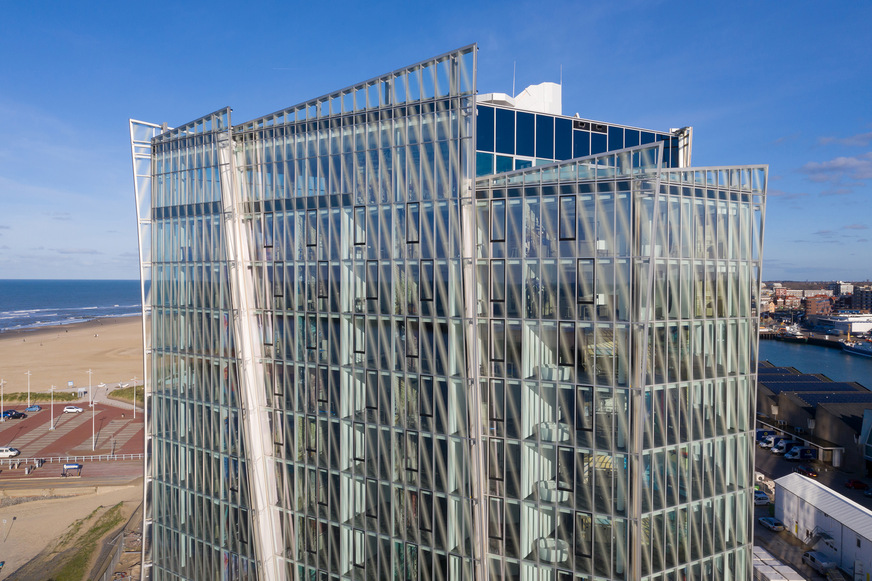
Flachglas MarkenKreis / Ossip van Duivenbode
How many glass designs did Pilkington Austria use?
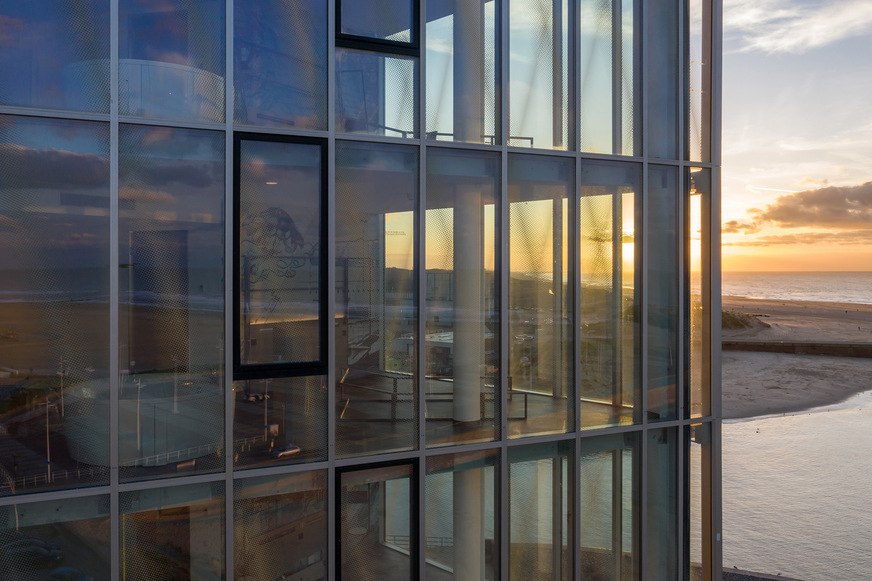
Flachglas MarkenKreis / Ossip van Duivenbode
The facade was made by Alkondor Hengelo on behalf of Boele & van Eesteren as an aluminium facade. According to the architects' specifications, Pilkington Austria printed over 900 toughened safety glasses as Pilkington DesignPrint in 166 different designs. The Austrian company was able to realise the variety of different designs using the digital printing process. For example, diagonal stripes were printed on the glass.
These are composed of different dot patterns. The dot patterns were printed with ceramic colours in RAL 7032 on position 2 of the glass pane and then tempered. With the different designs, different degrees of printing or opacity of the glass were achieved.
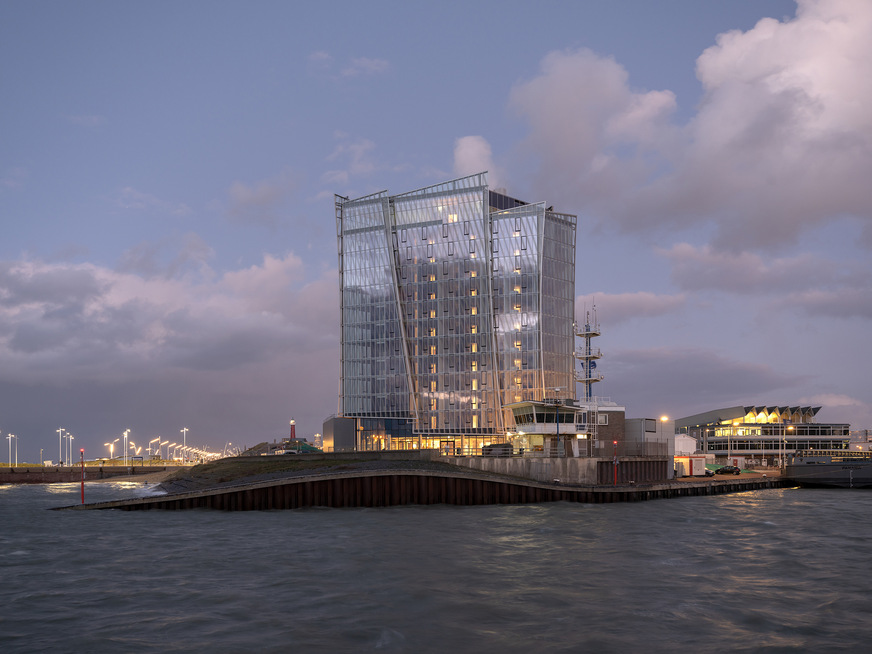
Flachglas MarkenKreis / Ossip van Duivenbode
How was Pilkington Austria's glass printing able to reduce the g-value by 8%?
It is remarkable that the unprinted insulating glass would have achieved a total energy transmittance of 46% according to building physics calculations. With the partial printing, the g-value of the glazing could be reduced to 38%. The printing alone was thus able to achieve an effective reduction in energy input and cooling loads.
The insulating glass, manufactured by Pilkington Enschede, consists of the printed ESG-H outer pane and an inner pane which, for reasons of fall protection, was designed as LSG and received an additional thermal insulation coating.
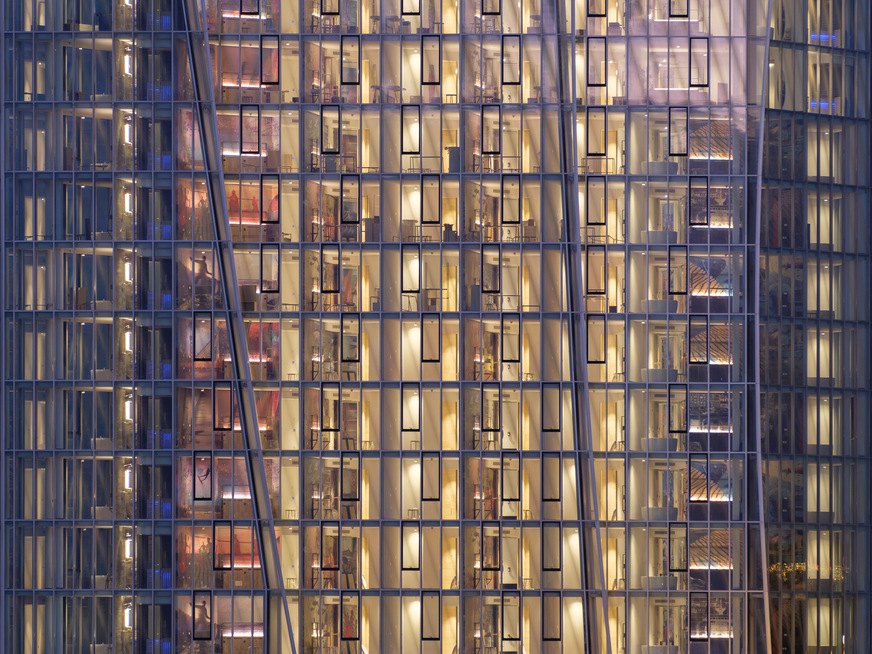
Flachglas MarkenKreis / Ossip van Duivenbode
The ground floor with foyer and entrance hall received the solar control insulating glass Infrastop Brillant 60/31 based on a Pilkington Suncool coating.
Also interesting: The Energy Brick: A design for a solar-powered brick facade
The new hotel has been open since spring 2021 and is now hoping to welcome a large number of guests in the summer.
Who was involved in the construction?
Architects: KCAP Architects&Planners, Rotterdam
Contractors: Boele & van Eesteren, Rijswijk
Facade builder: Alkondor Hengelo BV, Hengelo
Glass pressure supplier: Pilkington Austria GmbH, Bischofshofen
Insulating glass manufacturer: Pilkington Nederland BV, Enschede
About Pilkington DesignPrint
Pilkington Austria prints the tempered safety glass DesignPrint using digital printing, producing glass from 200 x 300 mm to 2,500 x 4,500 mm for facades and interiors. A member company of the Flachglas MarkenKreis, it offers a wide range of colours and uses sustainable colourings.
All ceramic colours are free of harmful substances such as lead, cadmium and lithium. In addition to RAL, special colours such as Satinato, AntiSlip through to Platinum and Gold colours are also possible. A wide variety of decors are available, as well as photo prints.
Pilkington Austria has developed a comprehensive design catalogue with a wide range of decors for facades, balustrades, partition walls, wall cladding, doors and bathrooms. This provides planners and builders with a wealth of options and suggestions, and also allows them to implement their own designs or photo wishes.

Flachglas MarkenKreis / Ossip van Duivenbode







